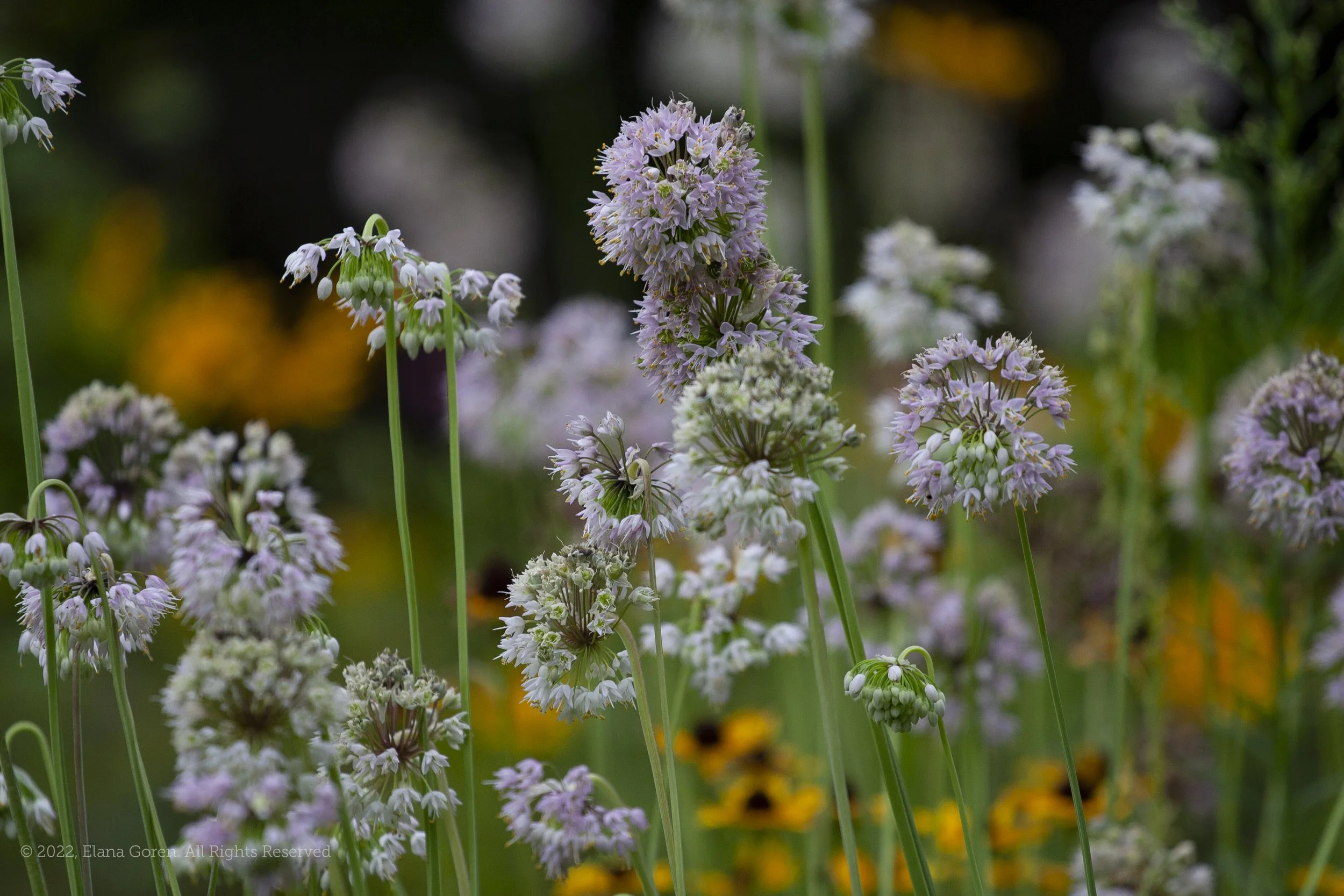August Plant Spotlight
Common name: Nodding Onion. Latin name: Allium cernuum.
Nodding Onion, Allium cernuum
It’s the dog-days of summer and some flowers in the garden have already come and gone. Yet, August still offers opportunities for perennials with beautiful flowers that the pollinators love. A spectacular example of this is our native Nodding Onion with the Latin name, Allium cernuum.
Nodding Onion is one of the easiest and most versatile native perennials to grow. And it’s a marvel to see it at any stage of its growing cycle. In early spring, its grass-like tuft of leaves emerge giving a splash of green to a garden that is just waking up from its winter slumber. Flower stalks begin to emerge in early summer with heads nodding in a graceful arc and coming into full bloom through August.
This drought-tolerant perennial is very easy to grow even in poor soils. Pollinators and songbirds are drawn to its tiny flower bursts, nodding umbels of white to rose pink. These long-lasting flowers will grace your garden for weeks, giving both your eyes and pollinators something great to feast on.
The Nodding Onion is so versatile that it works well in small spaces, border beds, rock gardens and formal gardens but can also be used in mass plantings or large drifts in a wildflower meadow. It thrives in both sun and partial shade and is deer resistant. What more can I say about this lovely member of the Amaryllis family? Here’s a link to the downloadable fact sheet with more info on this beautiful native plant.
Native Plants that Bloom in August
Black-Eyed Susan (Rudbeckia hirta)
Blazing Star (Liatris spicata)
Cardinal flower (Lobelia cardinalis)
Coneflower (Echinacea purpurea)
Garden Phlox (Phlox paniculata)
Great Blue Lobelia (Lobelia siphilitica)
Joe Pye Weed (Eutrochium purpureum)
Milkweed (Asclepias syriaca)
Nodding Onion (Allium cernuum)
Oxeye Sunflower (Heliopsis helianthoides)
Scarlet Beebalm (Monarda didyma)
Smooth Hydrangea (Hydrangea arborescens)
Summersweet (Clethra alnifolia)
Whorled Tickseed (Coreopsis verticillata)
